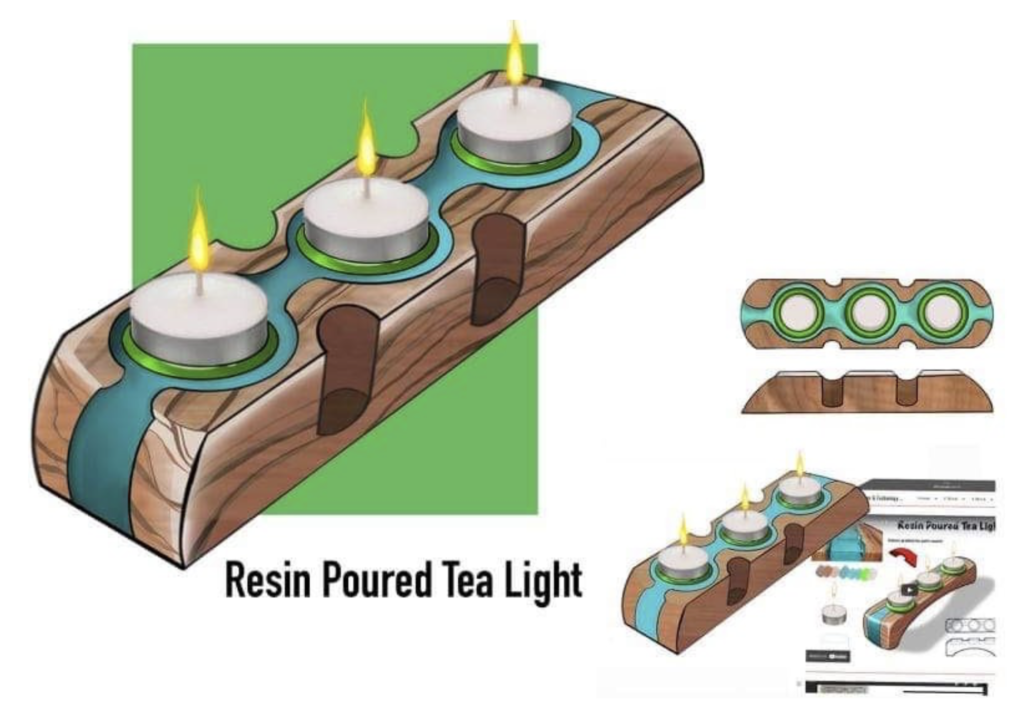Rendering
Resin Poured Tea Light Candle Holder
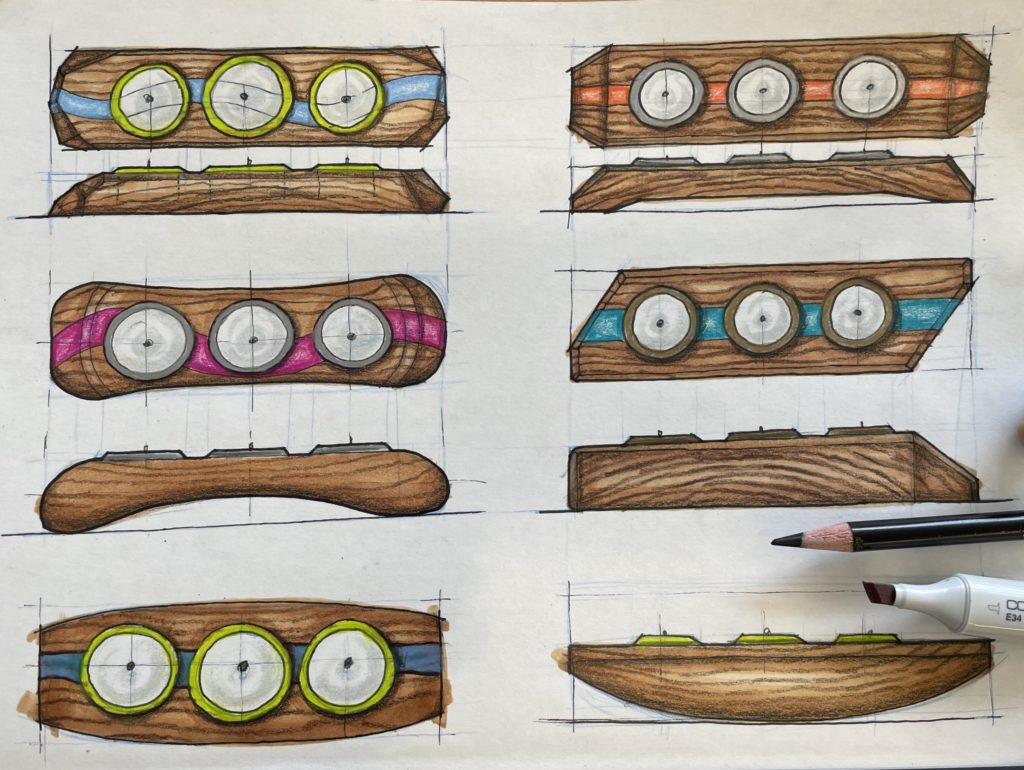
To communicate the effect of wood grain and resin you could follow some simple rules of rendering that makes your work look effective.
A simple rule to follow is ‘All Edges Are Always Dark’ . This means that on the outer edges you always press harder with your coloured pencil (or if using markers you go over the edge two or three times). You then blend that darker edge so that it gradually fades to become lighter – think of a haircut that gradually fades from hair to skin. This rule also applies to all edges inside the design work.
Equipment:
To communicate a wood grain requires two coloured pencils – 1 light and 1 dark. Ideally it could be two shades of brown however I have seen it done with Yellow and Black to communicate the effect, although it does not look as real as using brown tones. A recommended method is a Sand coloured marker pen with the grain applied through a coloured brown pencil.
The first YouTube video demonstrates adding the wood grain firstly with a pencil; then adding a darker brown pencil shade over the top. The second YouTube video (Part 2) demonstrates me adding a lighter brown colour over the top of the wood grain which smudges / blurs the grain to give a more realistic effect. Remember… All Edges Are Always Dark!
Step 1

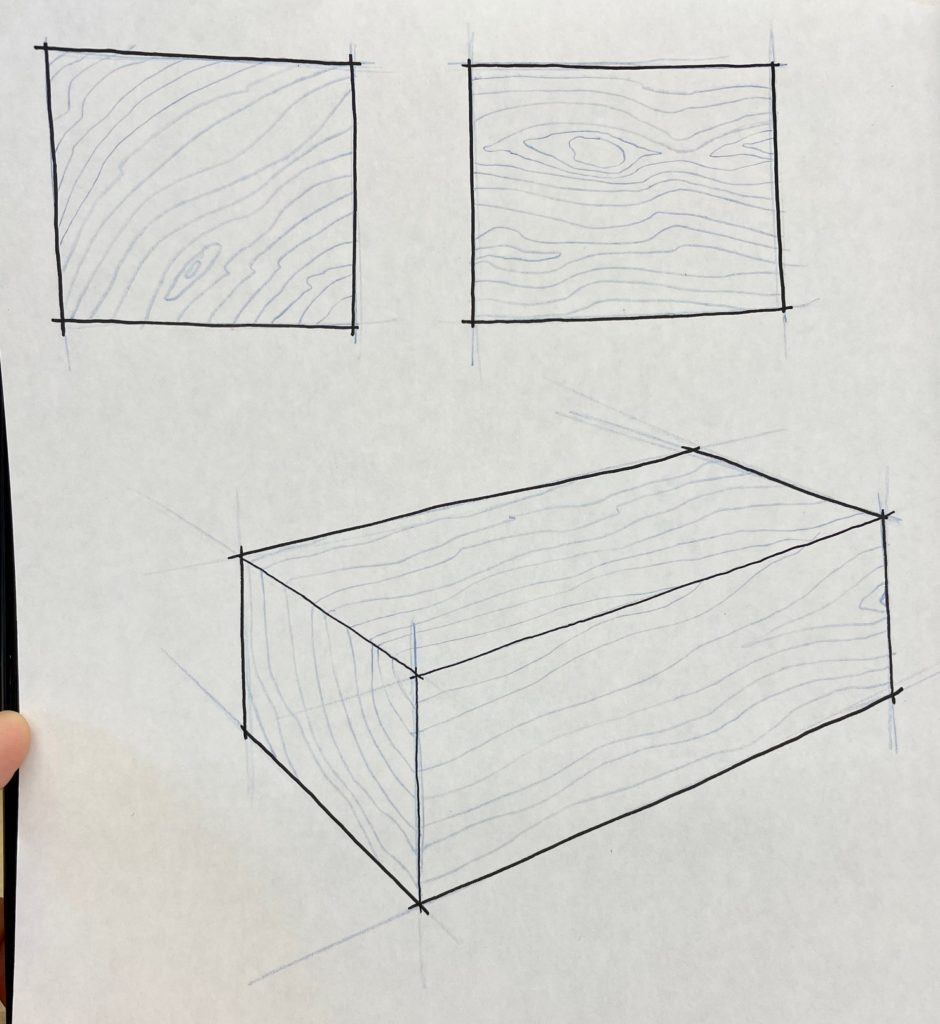
Sketch out your design work lightly in blue pencil (or pencil). Perhaps use Google images to find a photograph of a wood grain that you like. Try to copy the style of grain to your sketch very lightly in pencil.
Add black fine line pen (Thick & Thin lines) to the outside of the sketch to make it stand out before adding any colour.
step 2
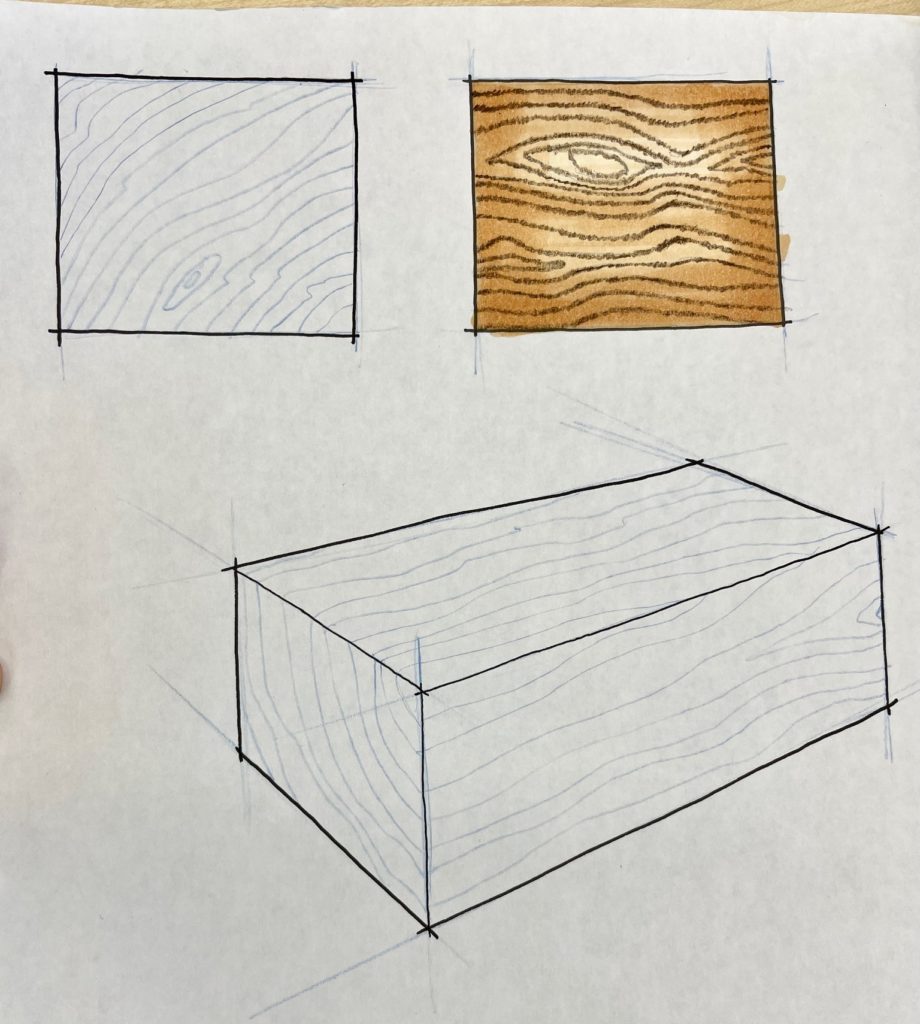
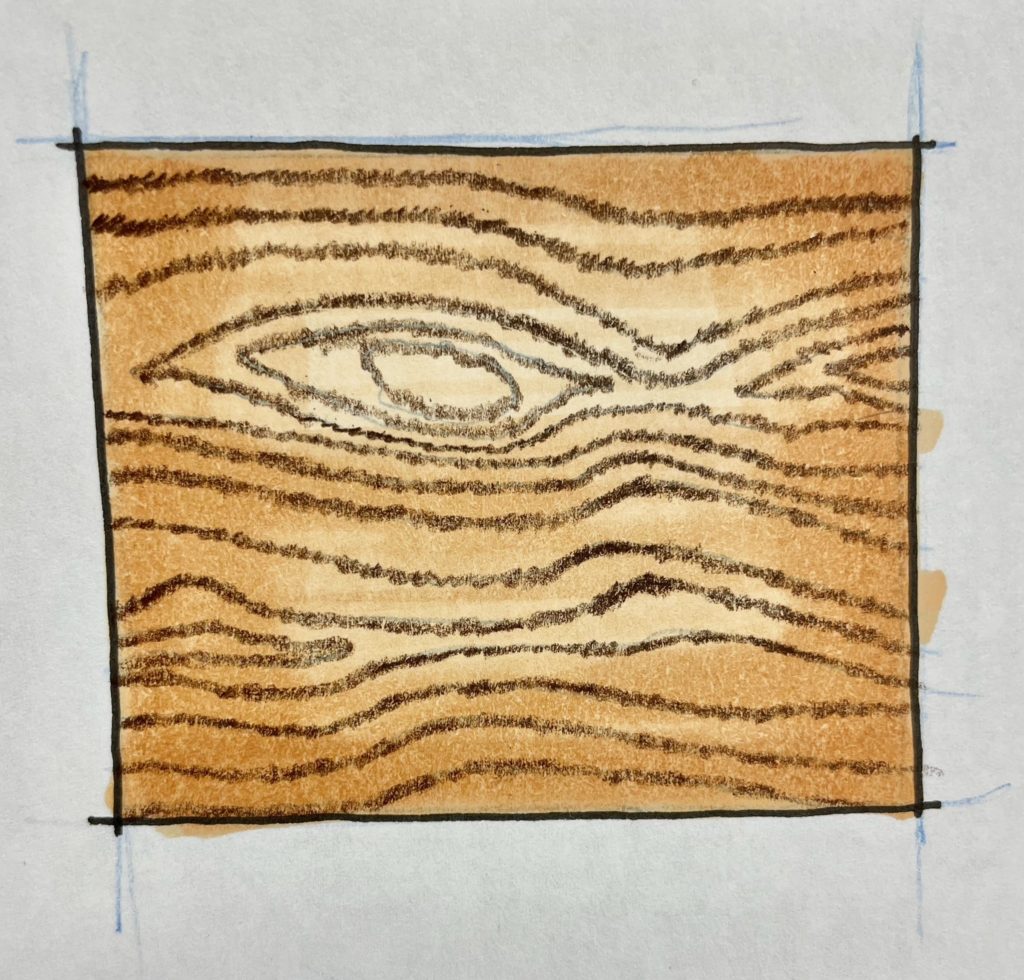
Using a sharp dark brown coloured pencil go over your feint pencil lines with different weights of pressure (dark & light) and add a rough shading to the line by quickly moving the pencil on the line. This initially looks a little ‘harsh’.
Then, using a sharp light brown pencil, apply the rendering rule – ‘All Edges Are Always Dark’. Then fade your darker edges over the top of the dark brown wood grain. This will help to ‘blur’ your grain slightly and give a realistic effect.
Example – marker wash with coloured pencil wood grain

Student examples


